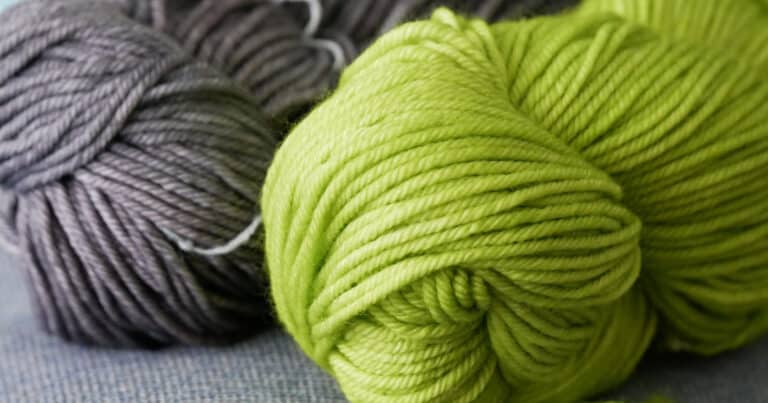By Marcelo Beilin – If you’re looking for a renewable, sustainable option to cotton or wool, bamboo yarn is a great choice. Bamboo is one of the most environmentally friendly materials available, and it makes a beautiful, silky soft yarn. It grows quickly and doesn’t require much water or fertilizer.
In this blog post, we’ll discuss the environmental benefits of bamboo yarn.
What Is Bamboo Yarn?
Bamboo yarn is a type of yarn made from bamboo grass fibers. It is soft, durable and hypoallergenic. Bamboo grows very quickly, doesn’t require much water or fertilizer to grow and it’s eco-friendly and sustainable.
The Benefits of Bamboo Yarn
Bamboo yarn has several key benefits: it is renewable, biodegradable, moisture wicking, anti-bacterial and thermal regulating.
Additionally, bamboo yarn is soft and silky, making it a great choice for garments, linens and accessories.
Bamboo Compared to Other Materials
The cultivation of bamboo requires a much smaller carbon footprint than other materials like cotton, wool or other fibers. In addition, bamboo also doesn’t require pesticides or herbicides in order to grow. In fact, bamboo is a very efficient plant as it can grow over three feet tall in just 24 hours, making it the fastest-growing plant on Earth.
Also, bamboo fibers readily accept natural color dies without the use of additives, whereas cotton needs to be chemically processed in order to properly absorb dies (this technique is know as mercerizing cotton).
The Downside of Bamboo Yarn in Consumer Products
The main downside of bamboo yarn is that it tends to be more expensive than other types of fibers, given its relative newness. However, the price difference is typically only a few dollars and it’s expected to come down over time with increasing economies of scale.
Additionally, bamboo yarn may not be as strong as some synthetic fibers. But overall, it’s an excellent choice for people looking for yarn that can be woven into a silky fabric that’s very comfortable to the skin.
How Is Bamboo Yarn Made?
Bamboo yarn is made by extracting bamboo fiber from the bamboo stalk. The bamboo stack is typically crushed and then its fibers are extracted through a process that uses natural dissolving enzymes. The fibers are then cleaned and spun into yarn.
This process is environmentally friendly and results in a product with low-carbon impact.
Environmentally Friendly
Bamboo yarn is environmentally friendly and sustainable because bamboo is a renewable resource. Bamboo grows quickly and can be easily replanted in a wide range of environments, making it a more sustainable choice than other materials such as cotton, whose growth is limited to very specific environments with the right amount of sunlight, care and water.
Sustainable Production
There are no known negative environmental impacts associated with the production or use of bamboo yarn provided it’s produced mechanically and not chemically. Due to its very fast growth rate and low use of water, bamboo can be replanted and used over and over again in a relatively small cultivation area, resulting in minimal soil erosion during harvesting. Also, bamboo can be harvested without killing the plant and it can be re-harvested after a short few months making it an attractive renewable crop.
Caring for Bamboo Fabrics
The best way to care for garments or linen made with bamboo yarn is to wash them in warm water using a normal cycle and then machine dry them.
Although you can hang bamboo fabrics to dry, you run the risk of stretching them to the point of making them permanently lose their shape due to the high yarn weight, because bamboo fibers are very heavy and flexible.
Religion and Bamboo
There are a variety of fascinating stories about bamboo in Hinduism. Here are a few from an article on Floweraura.com.
The Legend of Maa Sita
It is said that Maa Sita had an extra finger on one hand, so she cut it off and buried it in the ground. It is believed that from the finger the lucky bamboo plant grew. Later, pigs started chewing on the plant and made holes in the stalks. In those holes different grains and pulses were found and that is how sacred grains like millet and sorghum were discovered in India. According to this story, keeping bamboo plants at home will ensure there won’t be any shortage of food.
Lord Krishna’s Flute
If you are an indoor plant enthusiast living in India, then you must have heard that you must not burn bamboo. Now, there are scientific reasons for it as bamboo contains heavy metals like chromium, cadmium, copper etc., and burning it produces lead oxide which is harmful, but according to Hindu legends, bamboo must not be burnt as it is the origin of Lord Krishna’s favorite musical instrument, the flute.
The Bamboo King Story
Another fascinating legend is of the Bamboo King who went on a hunting spree. After a while, he got tired and was resting on the forest floor when an unusually bulky bamboo caught his eye. Unable to resist himself, he ordered his people to cut it and bring it to him.
From inside the bamboo, emerged the most handsome little boy anyone had ever seen. The Raja didn’t have a son so he adopted the child who later ruled the kingdom as the “Raja of the Bamboo”.
In Summary
Bamboo yarn has a lot of great benefits for garments, linen and other knitting projects and applications. It’s comfortable to wear, it’s hypoallergenic, it’s sustainable to cultivate, and there are no negative environmental impacts associated with its production or use.
Whether you use this knowledge about bamboo yarn to purchase a beautiful drape, bed linen or pair of trousers, you’ll be making a sustainable choice that has clear long-lasting benefits for the environment.
* Featured image source



